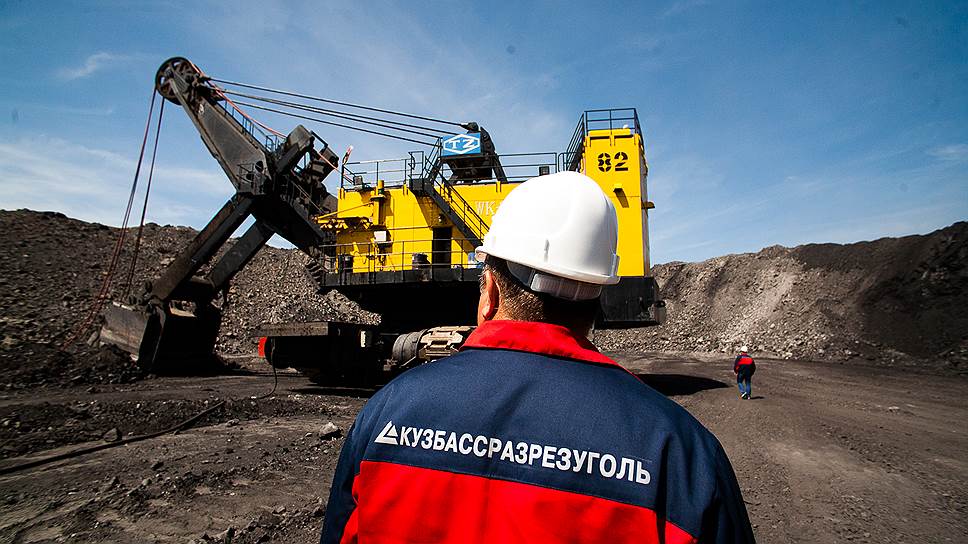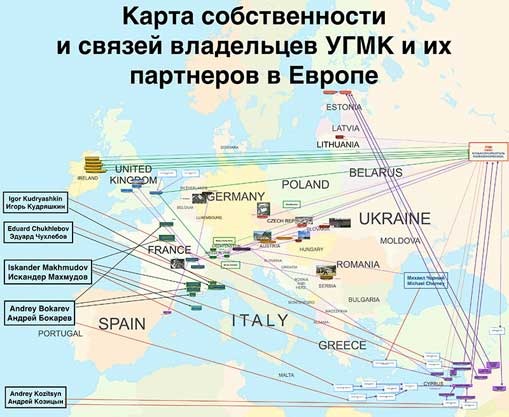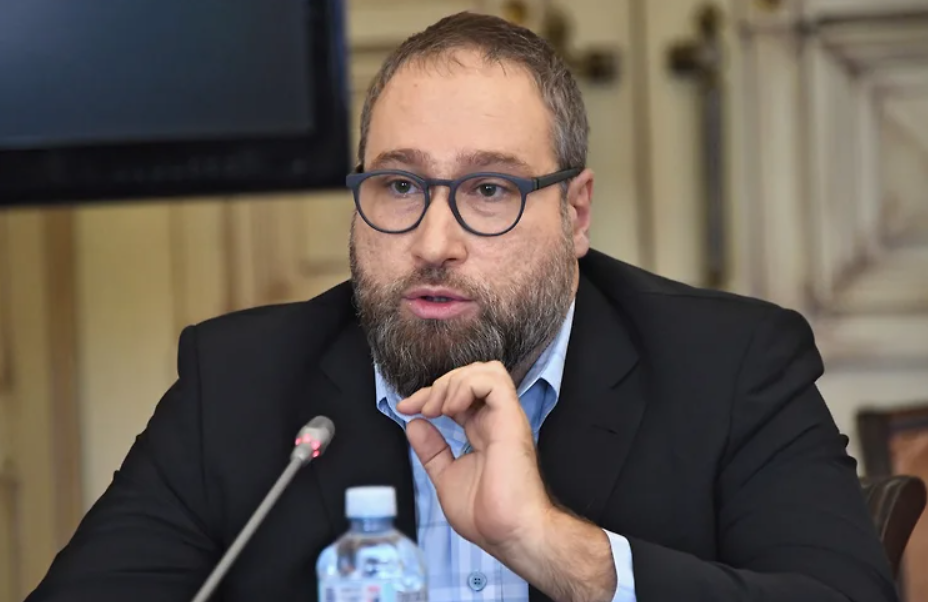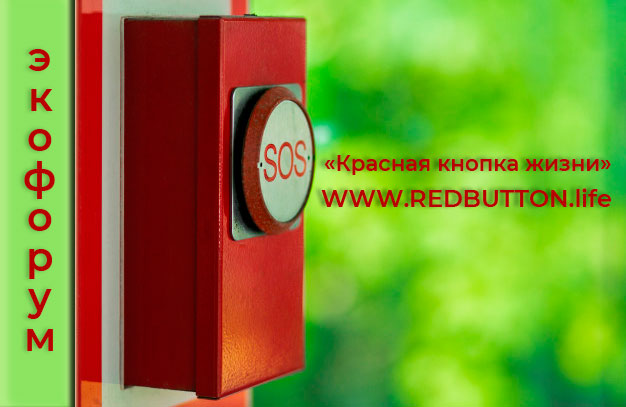KUZBASSRAZREZUGOL COAL COMPANY (tax number 4205049090) is Russia’s second largest producer of steam and coking coal and one of the world’s largest producers and exporters of coal. The company runs 11 open-pit mines and one underground mine. In 2020, the company produced 43.2 million tons, nearly 11 percent of the country’s total coal production of 402.1 million. 2008 saw a record production of 50 million tons. The decrease in coal production is due to a planned increase in strip mining. (Note: The name of the Kuzbassrazrezugol company, or KuzbassRazrezUgol, or KRU, stands for Kuzbass, the moniker of Kemerovo Oblast in Siberia; Razrez, an open-pit mine; and Ugol, coal. End Note.) INN - 4205049090.
OWNERS
Russian oligarch Iskander Makhmudov and Chairman of the Board of Kuzbassrazrezugol Andrey Bokarev control more than 75 percent of the company. Another beneficiary is Gennadiy Ayvazyan, Chairman of the Board of Krutrade, the exclusive exporter registered in Cyprus.

Photo: Kommersant
TAX EVASION SCHEMES
Traditionally for the Russian coal industry, the company shows losses or extremely low profits. In 2019, for example, the company’s revenues amounted to 151 billion rubles (USD 2 billion), while the loss was 406 million rubles (USD 5.4 million). In 2020, the revenues fell to 127 billion rubles (USD 1.7 billion), and the losses increased to 7.8 billion rubles (USD 104 million).
This could be explained by the widespread practice of “division of labor,” when production costs are borne by mining companies that sell coal to a foreign trader at a lower price. The latter supplies it to the consumer at the market price, pocketing the profits, which then disappear into the bowels of offshore companies with a non-transparent ownership structure.
In the case of Kuzbassrazrezugol, which exports about two-thirds of its coal, the beneficiary of the so-called “financial optimization schemes” is Krutrade that received the exclusive right to export coal mined in Kemerovo Oblast, a.k.a. Kuzbass. Over time, 84.96 percent of the company’s stock were bought by Coal Asset Management (Luxembourg). This company is associated with Gennadiy Ayvazyan, who headed Krutrade in 2002.
The company of the same name, Krutrade AG, exists in Switzerland and is headed by Andrey Bokarev. The Austrian company opened a representative office in Cyprus, Krutrade AG, after which it was liquidated in 2011, and trading was transferred to the Cyprus-based Carbo One Limited. In 2006, the coal trader Krutrade AG (Muuga) became a co-owner of the coal terminal in Muuga, Estonia. This company, through the Charboun Invest partnership, owns 45 percent of Coal Terminal AS. Other stockholders of the coal terminal at that time were AS Transgroup Invest (45 percent) and Maksim Liksutov (10 percent), a member of the Moscow government and Vice-Mayor of the Russian capital. Liksutov has been instrumental in many corruption schemes involving Russian oligarchs and high-ranking officials.
That Kuzbassrazrezugol transfers its capital abroad makes the company chronically unprofitable, which does not seem to bother its beneficiaries in the slightest. For example, in 2004, Krutrade’s revenue was USD 1.3 billion, while its net profit was USD 214 million.
LINKS TO CRIMINALS
Gennadiy Ayvazyan is close to Makhmudov and is entrusted with all export operations with raw materials produced by Kuzbassrazrezugol. Also, Ayvazyan has a reputation as an aggressive raider, acting in the interests of his senior partner, who prefers to distance himself from crime. In November 2017, a daring armed attack was carried out on the Anzherskaya-Yuzhnaya mine in Kuzbass. Doors were broken down, surveillance cameras were destroyed, and the company’s servers were seized. The mine stopped operating, and 80 miners could not rise to the surface. A riot squad arrived to restore order, detained 22 raiders, and seized several weapons.
The confrontation occurred because of a conflict between the bankruptcy trustee, the creditors, and a contractor engaged in the sale of coal. Behind the armed attack were structures controlled by Gennadiy Ayvazyan, acting in the interests of the head of Kuzbassrazrezugol, Bokarev. Both ultimately operated in the interests of the Ural Mining and Metallurgical Company (UMMC, a.k.a. UGMK), owned by oligarchs Iskander Makhmudov and Andrey Kozitsyn.
Ultimately, the Anzherskaya-Yuzhnaya mine was bought out at an auction, conducted with gross violations for the price three times cheaper than the starting price of 1.88 billion rubles (USD 25 million), by the Anzherskaya-Yuzhnaya Company, headed by Ayvazyan. Among the company’s founders are all the usual suspects—Ayvazyan, Bokarev, Kozitsyn, and Makhmudov—and a handful of their sidekicks.
This is just one shining example of how the owners of Kuzbassrazrezugol consolidate coal assets.
VIOLATIONS OF THE TECHNOLOGICAL PROCESS
Kuzbassrazrezugol works hard to create the image of a responsible user of natural resources that invests heavily in ensuring the trouble-free operation of its mines. However, in reality, violations of the technical process in the course of the company’s activities are gross and widespread. For example, in the spring of 2019, employees of the Siberian Branch of Rostekhnadzor (Federal Environmental, Industrial, and Nuclear Supervision Service of Russia) conducted an inspection at 70 hazardous production facilities of the company. As a result, orders were issued to eliminate over 200 violations of industrial safety requirements, and administrative penalties were imposed on 142 officers of the company. Judging by the fact that mining and drilling operations were suspended for three months, the violations were of a very serious nature.
On November 3, 2021, 60 miners were evacuated due to smoke in the Baykaimskaya mine of Kuzbassrazrezugol.
ENVIRONMENTAL DAMAGE
The open-pit method of coal mining causes maximum damage to the environment. It destroys the fertile layer of soil on a vast territory. Sewage poisons water bodies and pollutes aquifers, making the water unusable. Coal dust, getting into the air, causes enormous damage to the health of the people living near the mines. A great threat is potentially posed by waste dumps. Under high pressure, coal ignites in them, and it is impossible to extinguish the fire. Thus, there is a continuous burning of coal, accompanied by the release into the atmosphere of such combustion products as soot, radioactive Radon-222 gas, carbon monoxide, and carbon dioxide. The latter has a significant impact on and upsets the СО2 balance in the Earth’s atmosphere, which leads to the greenhouse effect.
When determining environmental damage and the amount of greenhouse gas emissions into the atmosphere, experts often forget that harmful emissions occur not only during the combustion of hydrocarbon fuels, but also during their extraction, enrichment, and transportation. With open-pit mining, the effects last for decades, even after the mine shuts down, because methane and other gases continue to come out of cracks in rocks. The actual impossibility of rehabilitation of giant quarries leads to disruption of groundwater circulation and acid pollution because of chemical reactions occurring in waste dumps and open coal beds due to oxygen access.
Kuzbassrazrezugol regularly takes part in court hearings over environmental damage caused by the company. The company has also violated the Land Law of Russia. The company has received orders to eliminate violations but so far has done nothing.
According to a report of Rosselkhoznadzor, Russia’s agricultural safety watchdog, Kuzbassrazrezugol failed to eliminate or compensate the damage caused to soil, to rehabilitate the land, to restore soil fertility, or to bring lands to a condition suitable for use for their intended purpose (namely, production of agricultural products). According to Rosselkhoznadzor, the company is to blame for the fact that almost 13 hectares (32 acres) are now unsuitable for its intended purpose—agricultural production. An administrative case was initiated against the company. The court found Kuzbassrazrezugol guilty of violating Russian laws and imposed a fine of 100,000 rubles (about USD 1,300).
THE 2013 BACHATSKY EARTHQUAKE
In recent years, mining-induced seismic activity has become a growing concern. On June 19, 2013, the world’s strongest man-made earthquake occurred in Kuzbass. The earthquake epicenter was about four km (2.5 miles) under the Bachatsky mine, the largest open-pit coal mine in Kuzbass (Belovsky District, Kemerovo Oblast), owned by Kuzbassrazrezugol.
About 5,000 houses were damaged, 350 of which were later declared unsafe and were demolished, including the train station in Belovo city. In the village of Bachatsky, a kindergarten was destroyed and the school was damaged so severely that its restoration took four years. Fortunately, there were no human casualties. According to an official report, the material damage amounted to 1.7 billion rubles (USD 22.7 million), but the official numbers are understated. The authorities only partially compensated for the damage caused to the homes of locals.
The earthquake measured 6.1 magnitude on the Richter scale (9 points), with the seismic intensity of 8.0 on the 12-point scale. About 25 aftershocks were also recorded. For comparison, in 1995, a 6.4 magnitude earthquake in Neftegorsk on Sakhalin Island, Russia, completely destroyed the city, with the death toll of 2,040 people. A weaker earthquake, similar to the one in Kuzbass, occurred in Tashkent (Uzbekistan, then USSR) in 1966. It measured 5.2 magnitude on the Richter scale, with the seismic intensity of 8-9 points on the 12-point scale. As a result, the city center of Tashkent was destroyed, including more than 1,000 administrative, educational, and industrial buildings, and over 300,000 people were left homeless.
The Kemerovo Oblast regional authorities took the position of denying the role of Kuzbassrazrezugol in the disaster. The mass media under their control persistently promoted the version that the event was natural, downplayed or ignored the scale of its consequences. However, according to some studies, the human-induced earthquake was due to the response of nearby fault zones to mining operations, primarily in large open pits where massive explosions occurred, which resulted in discharge of seismic energy in those zones. During the development of the Bachatsky open-pit mine, a large mass of soil accumulated in a short period of time, as a result of which the existing stresses in the sedimentary rocks triggered a discharge that released itself as an earthquake.
PUBLIC PROTESTS
A high-profile case took place in 2019 in the city of Kiselyovsk, where nine open-pit coal mines and several coal processing factories operate, and the waste dumps come close to residential buildings. As a result of the underground fire, one of the residents was burned. After that, residents of the streets adjacent to the fire area sought asylum in Canada.
Environmental activists and human rights activists have attracted public attention to falsified official reports on the quality of air. In reality, the air in the city contains many harmful substances, which many times exceed maximum permissible levels, in particular extremely dangerous for health silicon oxide. Locals believe that the main culprit for the emissions is the Vakhrushevsky open-pit mine and the Vakhrushevsky enrichment plant, both belonging to Kuzbassrazrezugol.
However, the monitoring station, owned by the company, does not record any excess of the maximum permissible levels of harmful substances in the air. True information on the quality of air is closed to public and the official reporting is falsified, which makes it impossible for activists to appeal to government environmental authorities. There is no independent monitoring in the city.
The International Criminal Court (ICC) in The Hague registered a collective appeal from the residents of Kiselyovsk. However, the appeal for genocide was rejected on formal grounds because Russia has withdrawn its signature from the Rome Statute, on the basis of which the ICC operates.
@blackmark_en – in Russian
Follow us:
Telegram in Russian
Telegram in English
Facebook in Russian
Facebook in English
Instagram in Russian
Instagram in English











